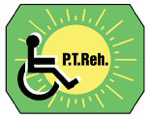


|
Current issue
Archive
Manuscripts accepted
About the journal
Editorial board
Reviewers
Abstracting and indexing
Contact
Instructions for authors
Publication charge
Ethical standards and procedures
Editorial System
Submit your Manuscript
|
3/2016
vol. 30 abstract:
Assessment of test-retest reliability and internal consistency of the Wisconsin Gait Scale in hemiparetic post-stroke patients
Agnieszka Guzik
,
Mariusz Drużbicki
,
Grzegorz Przysada
,
Andrzej Kwolek
,
Agnieszka Brzozowska-Magoń
,
Justyna Wyszyńska
,
Justyna Podgórska-Bednarz
Postępy Rehabilitacji (3), 41-53, 2016
Online publish date: 2020/01/23
View
full text
Get citation
ENW EndNote
BIB JabRef, Mendeley
RIS Papers, Reference Manager, RefWorks, Zotero
AMA
APA
Chicago
Harvard
MLA
Vancouver
Introduction
A proper assessment of gait pattern is a significant aspect in planning the process of teaching gait in hemiparetic post-stroke patients. The Wisconsin Gait Scale (WGS) is an observational tool for assessing post-stroke patients’ gait. Study aim. The aim of the study was to assess test-retest reliability and internal consistency of the WGS and examine correlations between gait assessment made with the WGS and gait speed, Brunnström scale, Ashworth’s scale and the Barthel Index. Material and methods The research included 36 post-stroke patients. The patients’ gait was assessed with the use of the Wisconsin Gait Scale, gait speed with the use of walk test, the level of motor control in a paretic lower limb – according to Brunnström recovery stages, muscle tone in a paretic lower limb – according to modified Ashworth’s scale and functional independence was assessed using the Barthel Index. Gait was assessed with the use of the WGS twice, with a 7-day interval, by three experienced physiotherapists. Results The analysis of internal consistency of the WGS revealed that the Cronbach’s α coefficient was high in the case of all the three raters and ranged from 0.85 to 0.88. It was noted that the coefficient of variation for all the comparisons was below 10%. When assessing the repeatability of the results, it was revealed that correlations between both measurements made by particular raters were very strong and highly significant. The WGS results significantly correlated with Brunnström scale, Ashworth’s scale and gait speed. Conclusions It was concluded that the WGS has a high internal consistency and test-retest reliability. Also, significant correlations were found between gait assessment made with the use of the WGS and gait speed, level of motor control and muscle tone of a paretic lower limb. The WGS constitutes a promising tool for a qualitative, observational analysis of gait in post-stroke patients and allows for proper planning, monitoring and assessing rehabilitation results. |
    |